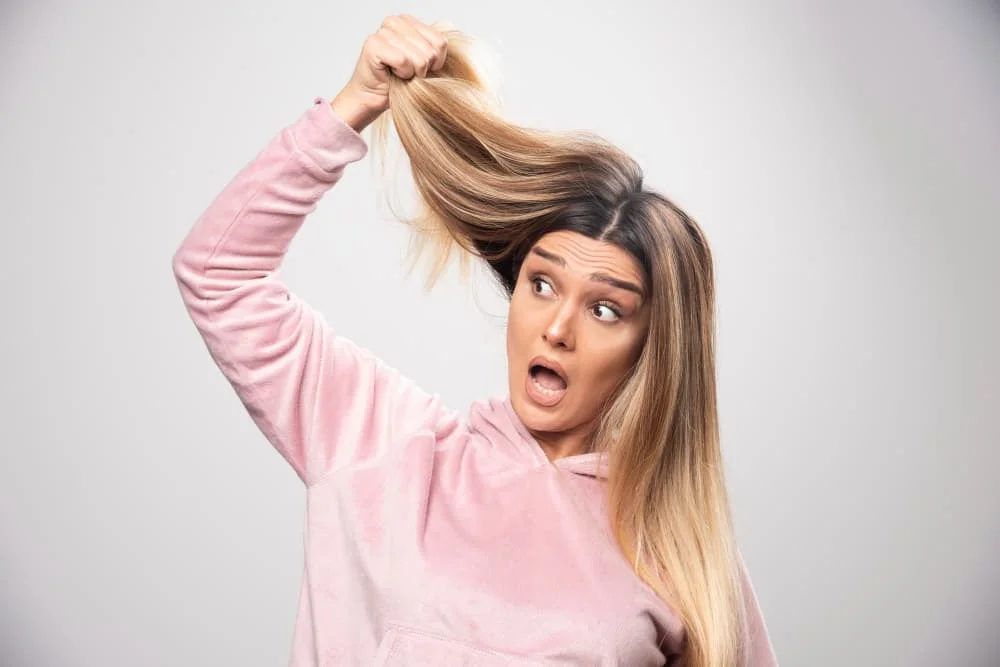
That frustrating moment when your hair sticks to your face, clings to your clothes, or stands on end with a mind of its own. We’ve all been there. Static hair is a common annoyance, especially in cold, dry months, when the lack of moisture in the air makes strands more prone to static buildup. But what exactly causes static electricity in hair, and more importantly, how to get rid of static in hair effectively?
In this guide, we’ll break down the science behind static buildup and share practical solutions to restore smooth, free hair. Whether you need a quick fix for instant relief or long-term strategies for keeping hair static under control, we’ve got you covered.
At Istanbul Hair Institute, we believe in comprehensive hair care that goes beyond hair restoration. Our experts specialize in addressing common hair concerns, from dryness and frizz to hydration and static prevention, ensuring you enjoy healthy, manageable hair year-round. Let’s put an end to static and bring back your hair’s natural smoothness!
Why Does Hair Get Static? Understanding Science
Have you ever noticed that your hair suddenly becomes uncontrollable, full of flyaway and frizz, especially in winter? The reason behind this is static electricity in hair. Statistics occur when an electric charge builds up on the hair’s surface, often due to friction. When hair rubs against materials like hats, scarves, or pillowcases, electrons transfer, leaving hair positively charged. Since repel like charges, strands push away from each other, causing hair to stand on end.
Why is My Hair Full of Static?
If you’re constantly struggling with static hair, several factors may be to blame:
- Dry Air: Low humidity—common in winter or arid climates—makes hair more prone to static buildup. Moisture in the air helps neutralize static, so when the air is dry, hair holds onto the charge.
- Dehydrated Hair: Dry hair is more likely to accumulate static. Hair that lacks moisture becomes brittle and more reactive to electrical charges.
- Fabric Types: Synthetic materials like polyester and nylon generate more static electricity compared to natural fibers like cotton or silk.
- Friction from Clothing & Brushing: Wearing hats, scarves, or even brushing hair with plastic combs can create more friction, increasing static.
Understanding what causes static hair in winter and other dry conditions is the key to hair static control—now let’s explore how to fix it!
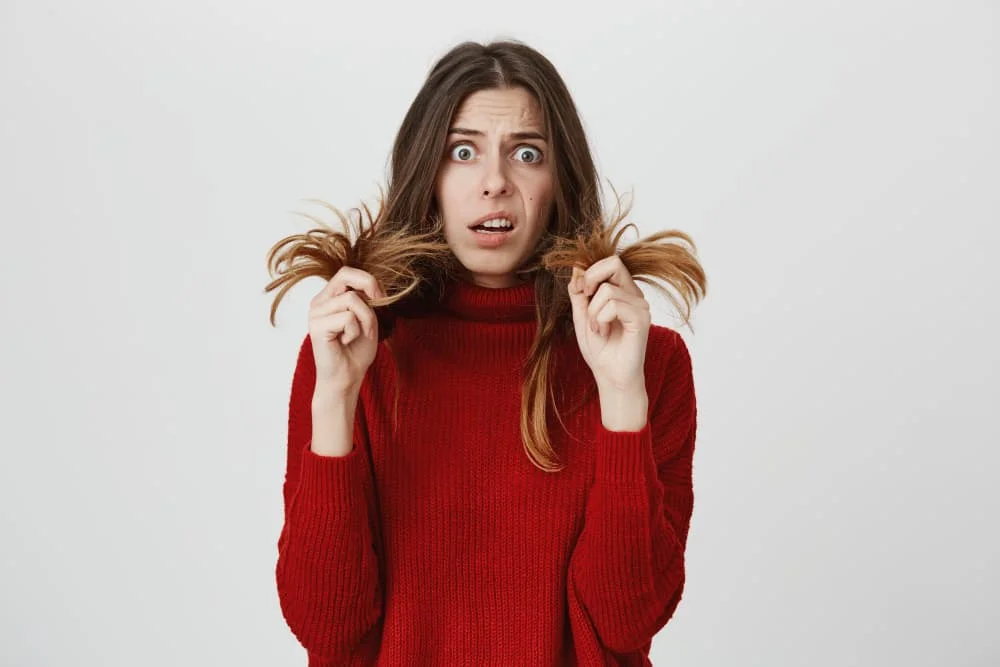
Quick Fixes: How to Get Rid of Static in Hair ASAP
When static takes over your hair, you need fast and effective solutions. Luckily, there are several quick tricks to neutralize static electricity in hair and restore smoothness within minutes, and if you are wondering how to get rid of static in hair, here are a few you can try right away.
Here are some simple yet powerful remedies:
- Use a Metal Hanger or Dryer Sheet: Rubbing a metal hanger or an unused dryer sheet over your hair can instantly discharge static. The metal absorbs excess electric charge, while the dryer sheet contains anti-static ingredients that smooth flyaways.
- Apply Hairspray or Serum: A light mist of hairspray or a few drops of anti-frizz serum can help weigh down flyaways and prevent static buildup. Keep a travel-sized version in your bag for quick touch-ups.
- Dampen Your Hands & Smooth Your Hair: If you don’t have any hair products on hand, lightly wet your hands with water and gently run them over your hair to restore moisture and eliminate static.
- Use an Ionic Hair Dryer: Unlike traditional dryers, ionic hair dryers emit negative ions that counteract the positive charge in hair, reducing static and frizz effectively.
- Wear Natural Fabrics: Avoid synthetic materials like polyester and nylon, as they generate more static. Opt for cotton, silk, or wool to minimize friction.
These quick fixes can rescue your hair from static in seconds, but for long-term solutions, it’s essential to tackle the root cause: dryness and moisture imbalance. Let’s dive into preventative strategies to keep static at bay for good!
Winter-Proof Your Hair: How to Control Static Hair in the Winter
Cold temperatures and dry air can strip moisture from your hair, making static electricity a major problem during the winter months. But with the right care, you can protect your hair from winter’s harsh effects and keep it smooth, manageable, and static-free.
Follow these winter hair care tips to prevent static buildup and maintain hydration:
- Hydrate from the Inside and Outside: A humidifier adds moisture to the air, helping to prevent dryness that leads to static. Staying hydrated by drinking enough water also improves hair health.
- Switch to Moisturizing Hair Products: Use a hydrating shampoo and conditioner formulated for dry or damaged hair. Look for shea butter, argan oil, or glycerin, which help lock in moisture.
- Wash Less Frequently: Overwashing strips natural oils, making your hair drier and more prone to static. Try extending the time between washes and using dry shampoo when needed.
- Deep Condition Weekly: A deep conditioning treatment or hair mask once a week can restore lost moisture, making your hair softer, stronger, and less prone to static.
By making these simple adjustments, you can control static hair in the winter and keep your hair healthy, hydrated, and frizz-free—even in the driest months!
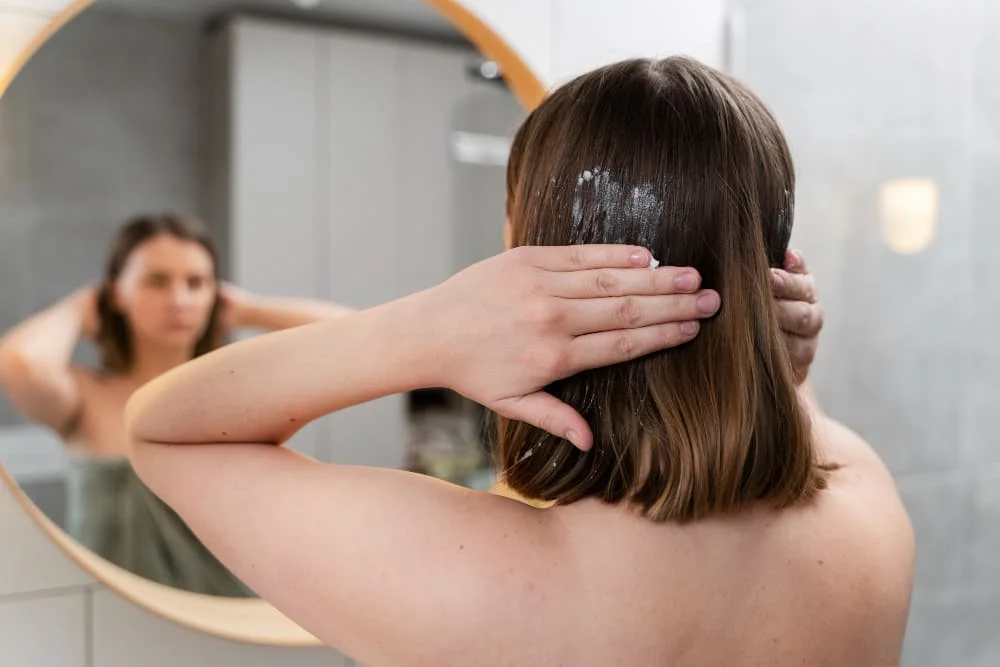
Hydration is Key: How to Combat Dryness and Static
Dry hair is more prone to static electricity because it lacks the moisture needed to balance out the charge. When your hair is dehydrated, flyaways and frizz become more frequent, making static control even more challenging. The solution? Proper hydration, which is one of the most effective answers to the question of how to get rid of static in hair.
How to Hydrate Hair?
To keep your hair moisturized and static-free, try these effective hydration tips:
- Use Moisturizing Hair Products: Look for shampoos and conditioners with hydrating ingredients like hyaluronic acid, shea butter, argan oil, and glycerin to lock in moisture.
- Deep Condition Weekly: A deep conditioning mask at least once a week can replenish moisture levels, strengthen hair, and reduce static buildup.
- Apply Hair Oil: Lightweight natural oils like argan, coconut, or jojoba oil help seal moisture and reduce frizz. Apply a few drops to the ends of your hair for a smooth finish.
- Minimize Heat Styling: Heat tools strip hair of its natural moisture, making it drier and more prone to static. Reduce blow drying and styling, and always use a heat protectant spray.
- Stay Hydrated: Drinking enough water supports overall hair health, keeping strands moisturized from the inside out.
Is Static Hair a Sign of Damage?
Occasional static is normal, especially in dry conditions. However, constant static buildup could signal dry or damaged hair. When hair loses moisture, it becomes brittle, prone to breakage, and dull looking. If static is a persistent issue, revise your hair care routine to include more hydration and gentle styling techniques.
By prioritizing moisture, you can keep your hair soft, healthy, and free from static-related frustration!
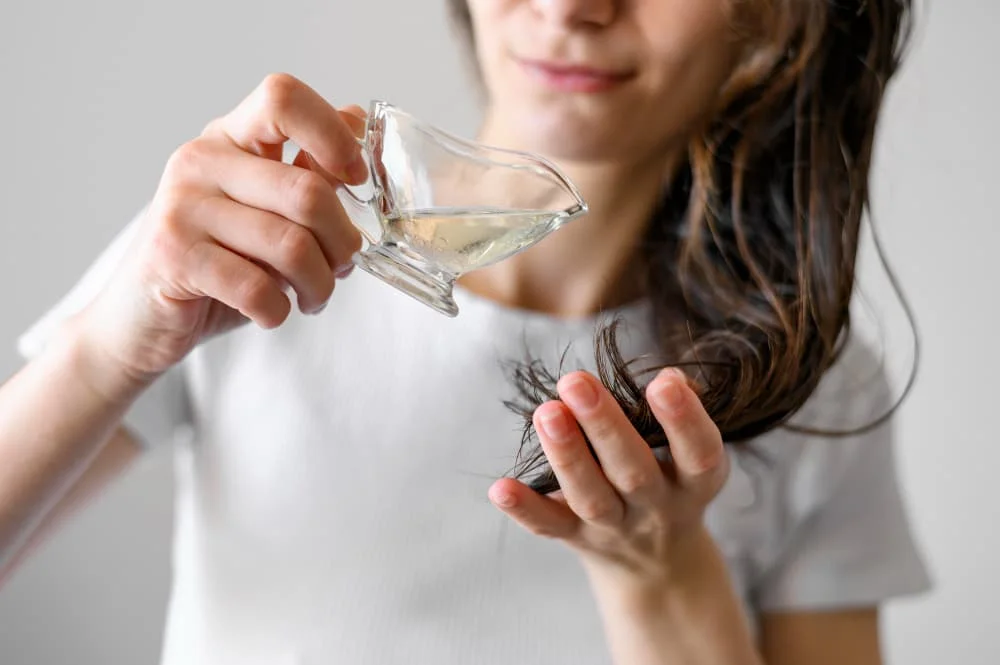
The Role of Washing: Does Washing Your Hair Help with Static?
When it comes to static hair, how often you wash your hair plays an important role. Over-washing can strip your hair of natural oils, making it drier and more prone to static, while infrequent washing can lead to product buildup, which may also contribute to frizz and flyaways. Figuring out how to get static out of hair often starts with finding the right washing frequency for your hair type.
How Often Should You Wash Your Hair to Prevent Static?
There’s no universal rule, but here are some general guidelines:
- Dry or Curly Hair: Washing 2-3 times per week is often enough to maintain moisture and prevent static buildup.
- Oily Hair: If you have an oily scalp, you may need to wash more frequently, but opt for a gentle, sulfate-free shampoo to avoid excessive drying.
- Normal Hair: Washing every other day or every few days helps balance oil production and keep static at bay.
Tips for Washing Hair to Reduce Static
- Use Moisturizing Shampoo and Conditioner: Products formulated for dry or damaged hair help retain moisture, reducing static.
- Avoid Hot Water: Hot water can dry out your scalp and hair, making static worse. Use lukewarm or cool water to seal the hair cuticle and lock in moisture.
- Don’t Skip Conditioner: Always use a hydrating conditioner to keep your hair soft and smooth.
- Limit Clarifying Shampoos: While great for removing buildup, clarifying shampoos can strip away natural oils if used too often.
Finding the right balance for your hair type will help keep static under control while ensuring your hair stays clean, soft, and healthy!
Conclusion
Static hair can be an annoying and persistent issue, but understanding its causes and using the right hair care techniques can help you regain control. Whether you’re looking for quick fixes, hydration strategies, or long-term solutions, if you are wondering how to get rid of static in hair, there are effective ways to reduce it and keep your hair smooth and manageable.
The key takeaways include:
✔ Hydrating your hair with moisturizing products, deep conditioning treatments, and hair oils.
✔ Using anti-static tools, such as ionic hair dryers and metal combs.
✔ Avoiding over washing and protecting your hair from dryness, especially in winter.
✔ Adopting hair-friendly habits, like choosing natural fabrics and using a humidifier.
If static remains a persistent problem despite your efforts, it may be time to seek expert advice. At Istanbul Hair Institute, our specialists offer personalized hair care solutions to help you achieve healthy, free hair. Contact us today for a consultation and take the next step toward smooth, static-free locks!
Recent Posts
-
 Say Goodbye to Static: How to Get Rid of Static in Hair29 Jan 2025
Say Goodbye to Static: How to Get Rid of Static in Hair29 Jan 2025 -
 Which Vitamin Deficiency Causes Hair Loss? Find Out Now23 Jan 2025
Which Vitamin Deficiency Causes Hair Loss? Find Out Now23 Jan 2025 -
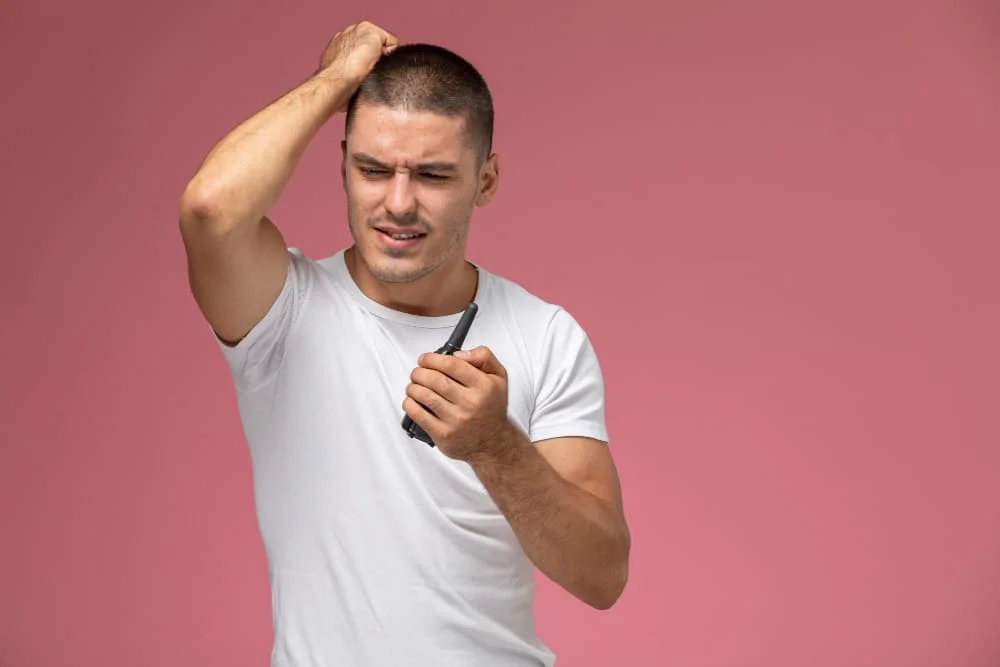 Does Creatine Cause Hair Loss? Separating Fact from Fiction21 Jan 2025
Does Creatine Cause Hair Loss? Separating Fact from Fiction21 Jan 2025 -
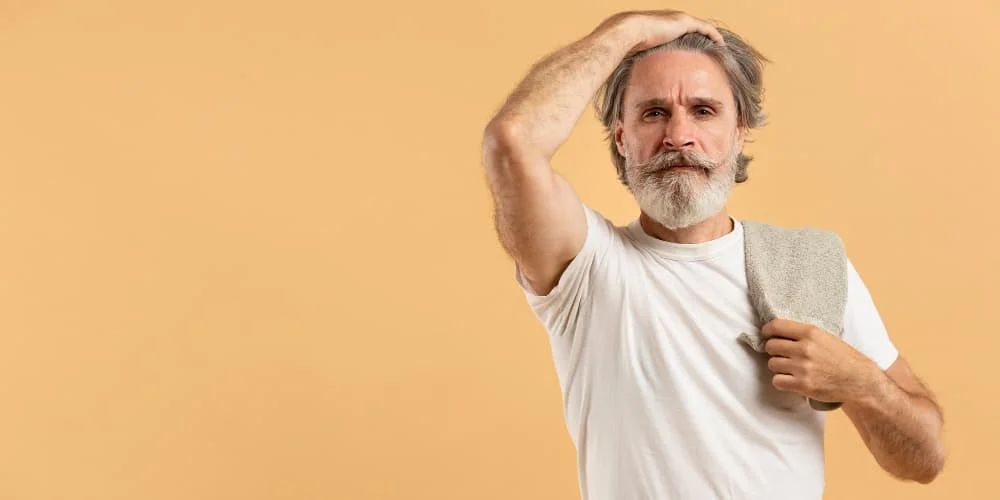 How Long Does Hair Transplant Last? A Comprehensive Guide to Long-Term Results15 Jan 2025
How Long Does Hair Transplant Last? A Comprehensive Guide to Long-Term Results15 Jan 2025 -
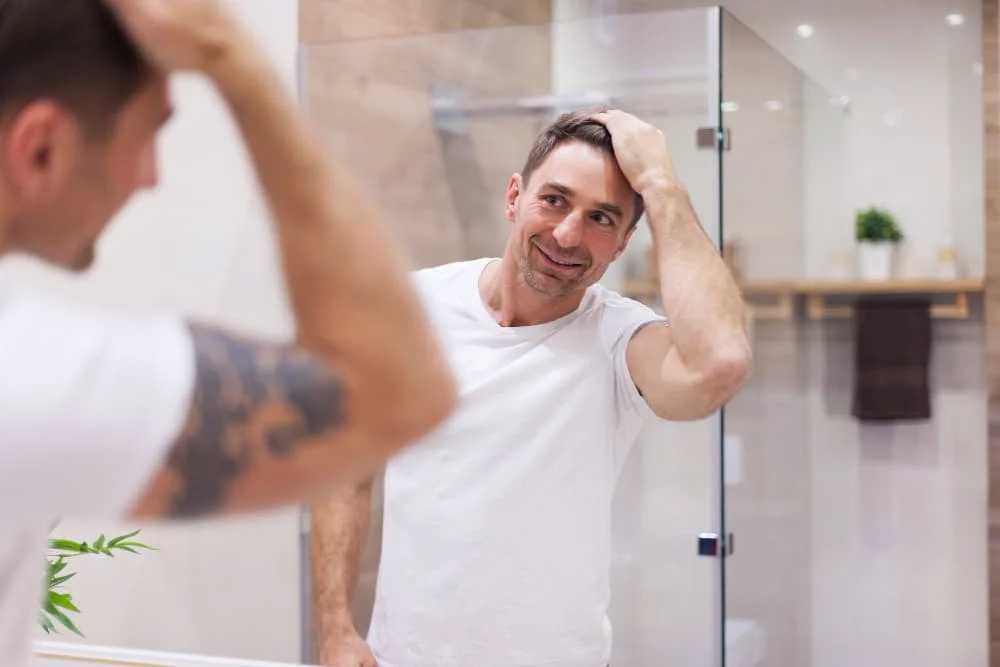 Hair Loss After Hair Transplantation: Is It Normal and What to Do?13 Jan 2025
Hair Loss After Hair Transplantation: Is It Normal and What to Do?13 Jan 2025

